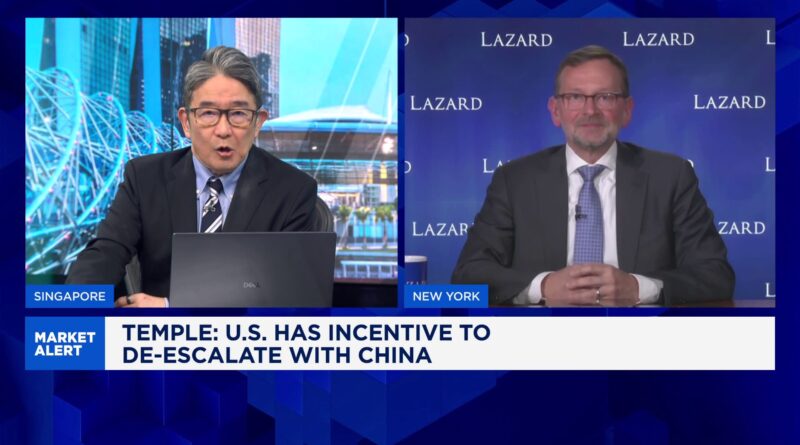Trump says he expects to lower fentanyl-related tariffs on Beijing, discuss ‘farmers’ with China’s Xi
TOKYO, JAPAN – OCTOBER 27: U.S. President Donald Trump disembarks Air Force One as he arrives at Haneda Airport on October 27, 2025 in Tokyo, Japan.
Takashi Aoyama | Getty Images News | Getty Images
U.S. President Donald Trump said he expects to lower fentanyl-linked tariffs on China ahead of a much-anticipated meeting with his Chinese counterpart Xi Jinping in South Korea this week.
He told reporters aboard the Air Force One on Wednesday that fentanyl flows into the U.S. and “farmers” will be among topics he expects to discuss with Xi on Thursday.
When asked whether the potential one-year pause in Beijing’s implementation of rare earth export controls would be enough to draw more concessions from the U.S., Trump said “we haven’t talked about the timing yet but we are gonna work out something.”
A delicate trade detente between the world’s top two economies that includes lower tariffs on each other’s goods is nearing its expiration on Nov. 10, if they fail to agree on another extension. Trump has also threatened additional 100% tariffs on Beijing starting Nov. 1.
Trump’s comments came after the Wall Street Journal’s report Tuesday that the U.S. could cut the 20% fentanyl-related tariffs on Chinese exports by half, in return for Beijing’s crack down on the export of chemicals that make fentanyl.
If Washington were to lower the fentanyl-tariffs on Chinese goods to 10%, that would bring the average tariff on most Chinese imports — currently around 55% — to about 45%.
On whether Taiwan would be on the agenda, Trump said “I don’t know if we’ll even speak about Taiwan. He may want to ask about it. There is not that much to ask about it.”
Answering a question about exports of Nvidia’s Blackwell chips to China, Trump said “I think we may be talking about that with President Xi.”

The two leaders’ meeting comes as bilateral tensions have escalated in the recent weeks with Beijing turning up the heat on rare earth export controls, drawing Washington to retaliate with port fees on Chinese ships and threaten software-related export restrictions.
Trump is expected to meet Xi on the sidelines of the Asia-Pacific Economic Cooperation, or APEC, summit, in what would be their first in-person meeting since Trump’s return to the office in January.
In a speech at the APEC summit Wednesday, Trump said that he hoped to reach an agreement with Xi, which will be “a good deal for both.” The U.S. will also finalize a trade agreement with South Korea “very soon,” he added.
In a brief statement last Friday, Chinese foreign ministry said that Xi will pay a state visit to South Korea during Oct. 30 to Nov. 1, without mentioning a meeting with Trump. The Chinese leader will deliver a speech at the summit and hold bilateral meetings with foreign leaders, a spokesperson of the ministry said last Friday, without specifying the timing of Xi’s speech.
The U.S. president kicked off his whirlwind Asia trip on Sunday, signing a flurry of trade and mineral agreements with Southeast Asian leaders and most recently Japan.
Likely outcomes from the Trump-Xi meeting include Beijing’s guarantee of ensuring the U.S. access to rare earth items under its export-control measures, purchases of Boeing aircraft, approval for the sale of TikTok’s U.S. operation and more efforts on curbing fentanyl flows, according to Neo Wang, China strategist at Evercore ISI.
In return, the U.S. could offer to loosen export controls on certain semiconductor equipment and AI chips, roll back the 100% tariff threat, in addition to a reduction of 10 percentage points in the fentanyl-linked tariffs, starting from Nov. 10 as part of a renewed tariff truce, Wang said.
“We expect Beijing to give Trump a way out on the fentanyl deadlock, such as via a new promise from Xi in person, to facilitate Trump’s reduction on China fentanyl tariff, effective no later than Nov. 10,” Wang added.
Source – Middle east monitor





